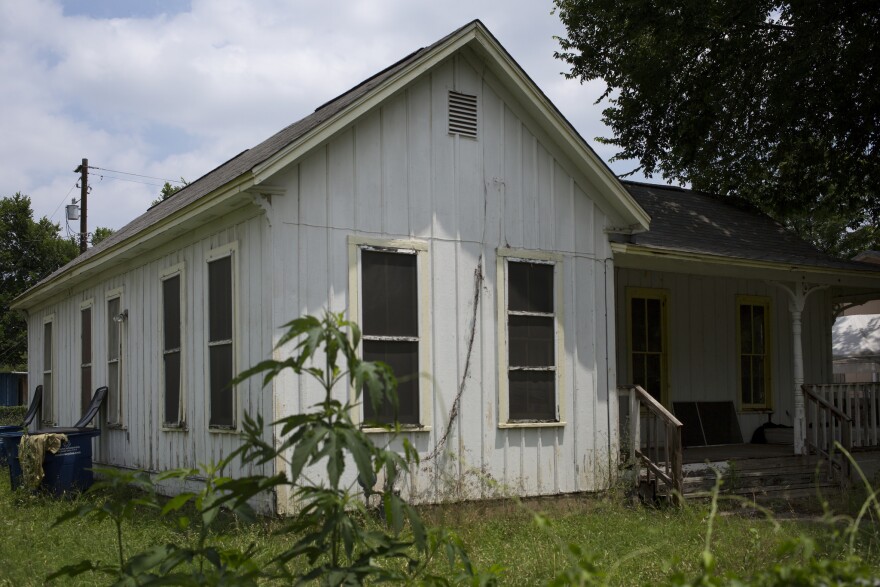City officials are in the process of surveying East Austin to determine which buildings qualify for historic preservation, but some residents want to put a stop to any demolition until that survey is complete.
Amy Thompson sits outside a home on E. Third Street that’s stood for more than a century. Thompson is with the East Cesar Chavez Neighborhood Planning Team, a group that successfully advocated for this house to be considered for historic zoning last month.
“The home’s history and architecture reflect the history of our neighborhood here in East Cesar Chavez,” she says. “It’s the history of the average resident and their contributions to the building of our city.”

Thompson and her team got involved when a group of homeowners applied to demolish the house, wanting to build new homes on the property. It’ll stay intact for now while the city reviews its historic value, but this was just the latest battle in the neighborhood’s ongoing struggle over preservation.
“Currently with the rapid growth that we’ve seen in the last couple of years downtown, there’s incredible pressure on the neighborhoods immediately east of downtown, and we’re losing historic structures at an increasing rate,” she says.
Earlier this year, the city launched a historic survey of East Austin to determine which structures should be protected and preserved. The team expects to release its findings by the end of this year, but Thompson worries that may be too late. The neighborhood planning team is pushing for a moratorium on any demolition until the survey is complete.
“Before the survey is even going to be done, we may lose countless homes that the surveyors have identified as historic structures,” she argues.
But others say there are adequate protections in place.
Any applications to demolish a house that’s more than 50 years old are already referred to the Historic Landmark Commission, says Steve Sadowsky, a historic preservation officer with the city.
“The Landmark Commission is reviewing those applications, so they understand the history of the building,” he says. “They look at the architecture of it, and if it fits our criteria for designation, then they will have the chance to recommend it for historic zoning. But, see, a moratorium would just say, ‘No demolitions.’”
District 3 Council Member Pio Renteria represents this part of East Austin. He originally supported the idea of a moratorium and was going to bring it to the council, but now he doesn’t think it’s necessary.
“I feel like once they go through the Historic Landmark Commission that they’re going to do a thorough overview,” he says.
Renteria hopes the results of the city’s historic survey will give sense of direction for the future of East Austin.








